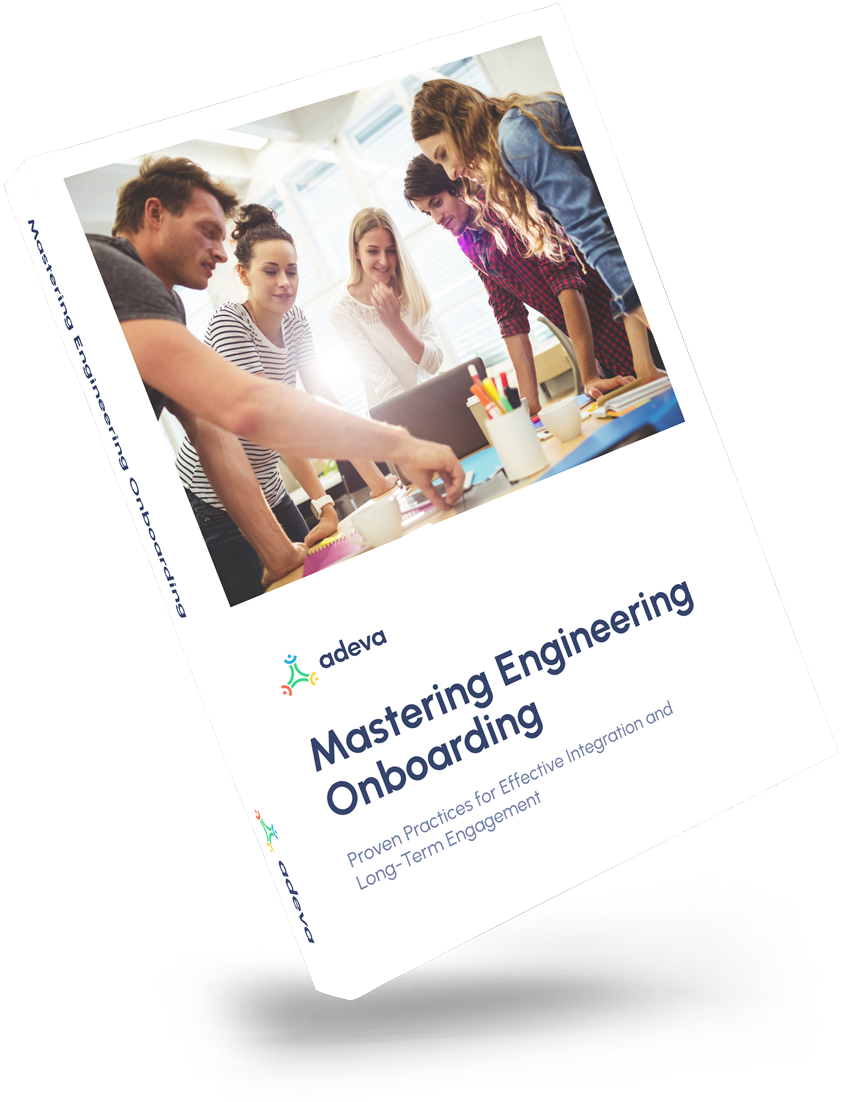FREE GUIDE
How to Master Engineering Onboarding:
Proven Practices for Effective Integration and Long-Term Engagement
A comprehensive guide for engineering leaders equipped with actionable strategies and practices to ensure seamless integration of new hires into your engineering team.
The Mastering Engineering Onboarding guide teaches you how to:
Prepare for pre-onboarding
Develop onboarding objectives
Structure the onboarding timeline
Execute technical onboarding
Merge cultural integration and relationship-building
Stimulate continuous learning and professional growth
Set up feedback mechanisms and monitor performance
Measure onboarding effectiveness
Deploy advanced integration tactics
Tackle common onboarding challenges
Promote long-term engagement

Why is it important to have a structured engineering onboarding process?
Engineering onboarding is a complex process that requires thoughtful planning, execution, and continuous refinement. Done right, it sets the stage for long-term success, innovation, and job satisfaction. Done poorly, it can lead to confusion, disengagement, and even early turnover.
What are the key components of onboarding preparation?
Starting the process before the first day helps create positive first impressions and builds relationships. Through a detailed exploration of pre-onboarding strategies and the creation of a tailored onboarding timeline, it's important to balance technical training with cultural integration, using clear communication, mentorship, cultural activities, continuous learning, and ongoing feedback.
- Intro table with general information (team, timeline, and related documents)
- Objectives and results
- Owners and partners
- Key result scores
- Current status
How can you evaluate the effectiveness of the engineering onboarding program?
Evaluating the effectiveness of an engineering onboarding program is pivotal to ensuring new hires are seamlessly integrated into teams and are productive from the outset. Identifying Key Performance Indicators (KPIs) such as time to productivity, feedback quality, retention rate, and skill acquisition and success metrics are essential to measuring the effectiveness of the onboarding program. These KPIs assess how quickly new engineers become proficient, as well as their satisfaction levels, long-term retention, and skill development. Gathering and analyzing feedback from new hires, managers, and mentors is vital for continuous improvement. This feedback helps identify areas needing clarity, support, or resources and guides adjustments in training and mentorship.
